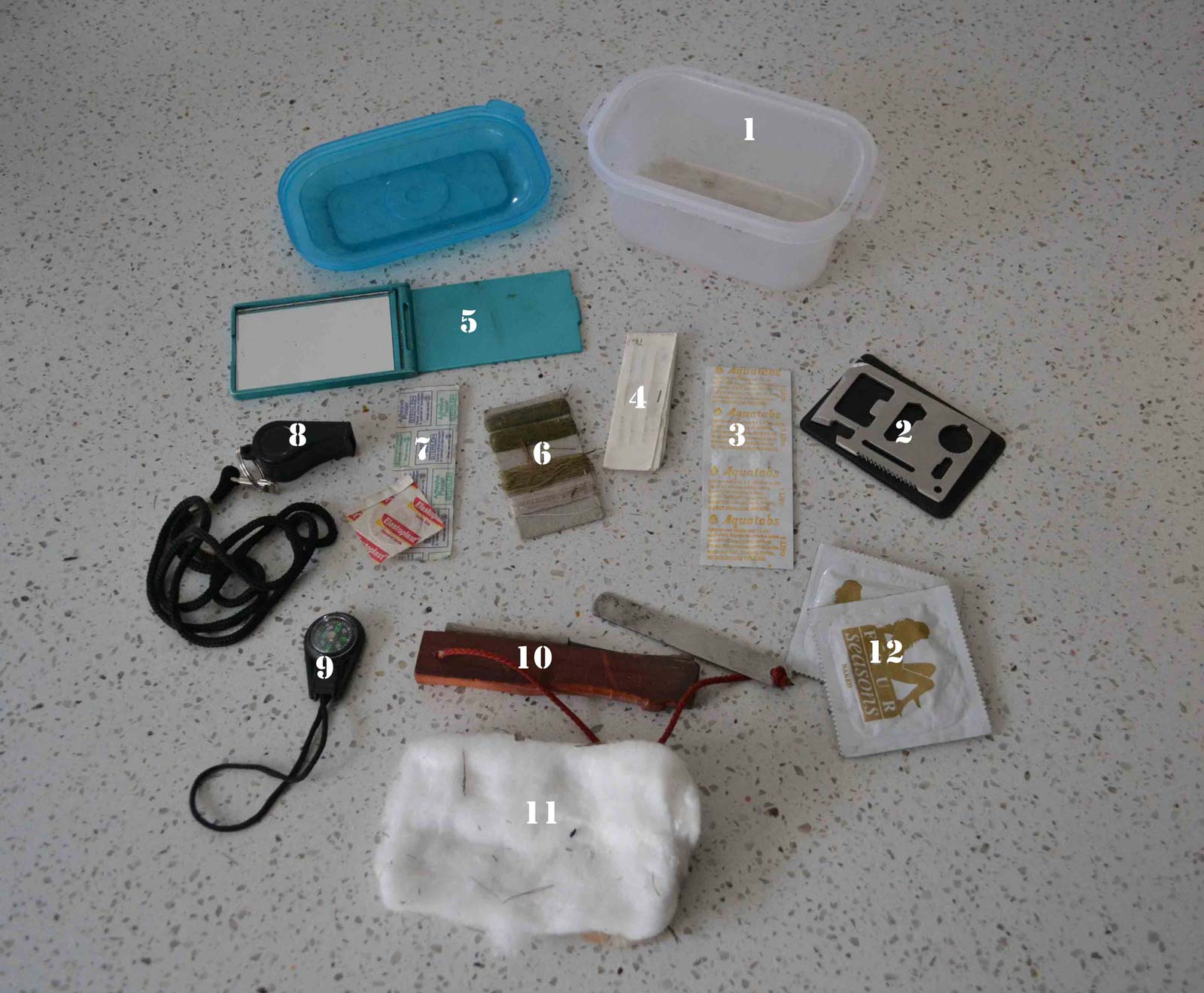Hiking survival kits: Building tips & essentials
Hiking is an enriching experience that connects you with nature, but it can also present unexpected challenges. Whether you’re embarking on a day hike or a longer adventure, I cannot stress enough the importance of carrying a personal survival kit. Having the right items on hand can make a significant difference in ensuring your safety and well-being in the wilderness.
Why You Need a Survival Kit
The Australian wilderness can be unpredictable, and accidents can happen even on short hikes. Your survival kit should contain essential items to help you survive until you can walk out or receive assistance. Remember the “Big 5” priorities of survival: water, warmth, shelter, signals, and food. With a well-prepared kit, you’ll be better equipped to handle any situation.
Choosing the Right Container
Your survival kit should be packed in a compact, durable, and lightweight container. Aim for something small enough to fit into a large pocket, and ideally, it should weigh less than 500 grams. A waterproof container is essential to protect your items from moisture and the elements.
Essential Items to Include
Here’s a comprehensive list of items to consider for your survival kit, categorised for easy reference:
Repair and Maintenance Tools
- Duct Tape: Ideal for repairing damaged gear and creating makeshift fixes.
- Safety Pins: Versatile tools for securing items or fabric.
- Heavy-Duty Sewing Needle and Nylon Thread: For mending gear or stitching up wounds.
Water Procurement and Purification
- Water Sterilisation Agents or Filters: Ensure you have a reliable method for purifying water.
- Water Procurement Bags: Useful for collecting and transporting water from natural sources.
Navigation and Signalling
- Compass (oil-filled): Essential for navigation. Always know how to use it!
- Signal Mirror or Flash: For signaling rescue teams or passersby.
- Whistle: A vital tool for attracting attention when lost; it’s much more effective than shouting.
Fire and Warmth
- Firestarter or Flint: To start a fire easily in emergency situations.
- Tinder: Easy-to-light material for building a fire. (Note: Not the dating app!)
- Emergency Blanket or Bivvy: Lightweight and compact, these provide essential warmth and shelter.
Food and Foraging Tools
- Fish Hook, Fishing Line, Sinker, and Swivel: Basic fishing gear for food procurement.
- Tea Bag: A small comfort item to help you relax while you assess your situation.
Medical Supplies
- Band-Aids: A selection for treating minor cuts and scrapes.
- Mini Survival Cards: Quick reference guides for emergencies.
- Waterproof Survival Instructions: Keep critical information handy in case of emergencies.

Making Your Own Survival Kit
In the photo above, you’ll see all the essential items included in my home-made survival kit, each numbered for easy reference. Many items can be found at your local supermarket, allowing you to build your own customised kit. Here’s a closer look at each item:
- Waterproof Container: The first essential is a waterproof container. The one shown above is small enough to fit in a pocket or in a designated pouch on a backpack. It’s wise to keep an elastic band around it to prevent accidental opening, ensuring it stays securely closed and your gear remains protected from moisture.
- Survival Card Tool: This handy little tool is a must-have! A small, credit card-sized survival tool, it includes a can opener, bottle opener, flat-head screwdriver, multiple wrench sizes, a straight-edge blade, saw blade, and even a ruler for map work. It fits conveniently in the kit and offers a range of functionalities when you need them most.
- Water Purification Tablets: While there are various methods to purify water in nature, such as those taught in our Me Vs. Wild weekend experience, water purification tablets are a reliable choice. Typically using iodine, one tablet can purify one liter of water in about an hour. Always check the expiration date to ensure they’re effective.
- Sewing Needles: You’d be surprised at how versatile sewing needles can be in the wild. They can serve as a makeshift compass needle, help with sewing tears in clothing or gear, assist in stitching up wounds, or even be used for fishing.
- Signal Mirror: A simple yet effective tool, this signal mirror can be easily found at discount stores. It’s designed for signaling rescue vessels, aircraft, or vehicles, making it invaluable in emergencies.
- Sewing Thread: Essential for closing wounds or repairing gear, sewing thread can also be useful in making fishing lines or traps. It’s a small item that packs a significant punch when it comes to functionality.
- Bandaids: A small selection of bandaids is crucial for treating minor cuts and scrapes. Remember, though, that you should always have a separate, more comprehensive first aid kit. Additionally, we highly recommend undergoing first aid training to prepare for more serious injuries.
- Whistle: A whistle is a vital tool for attracting attention when lost. Instead of straining your voice, use the high-pitched sound of a whistle to signal for help. Its effectiveness in emergency situations cannot be overstated!
- Button Compass: If you’re not familiar with how to use a compass, it’s essential to learn as soon as possible! Keeping a button compass in your survival kit is wise for backup if your main compass is lost or broken. Be sure to store it away from metal objects to avoid magnetic interference.
- Aussie Survivor Tool: When it comes to fire lighting tools, the Aussie Survivor Tool is our go-to option. This reliable tool features a flint striker combined with magnesium shavings and oil-treated rosewood for tinder. It’s perfect for creating fire, signaling, and providing light, and it’s available from the Melbourne Survival Experience.
- Cotton Wool: By far one of the most appreciated items in the survival kit! Cotton wool ignites easily, making fire creation a breeze. It’s great for warmth, light, cooking, or simply boosting morale. As a tightly-packed alternative, you can also use a tampon.
- Condoms: Yes, you read that right! Condoms can hold several hundred milliliters of water, making them excellent for water storage or carrying fresh water. Just remember to keep the lubricated side facing out to avoid spills!
Download Your Checklist
Ready to get started? Download my Survival Kit Checklist to ensure you have all the necessary items packed and ready for your next adventure.
Final thoughts
Having a well-prepared survival kit can mean the difference between a minor inconvenience and a major crisis in the wilderness. By carefully assembling your kit and ensuring it’s easily accessible, you’ll be better equipped to tackle any challenges that may arise during your hike.
Creating your own survival kit is not only a rewarding experience but also a fun activity to share with family or friends. With these essential items in your kit, you’ll be well-prepared for your hiking adventures. These tools enhance your safety and provide peace of mind, allowing you to focus on enjoying the beauty of the Australian wilderness.
Remember, preparation is key, and having the right gear can make all the difference when you need it most. So gear up, stay safe, and embrace the incredible experiences that await you in nature.





